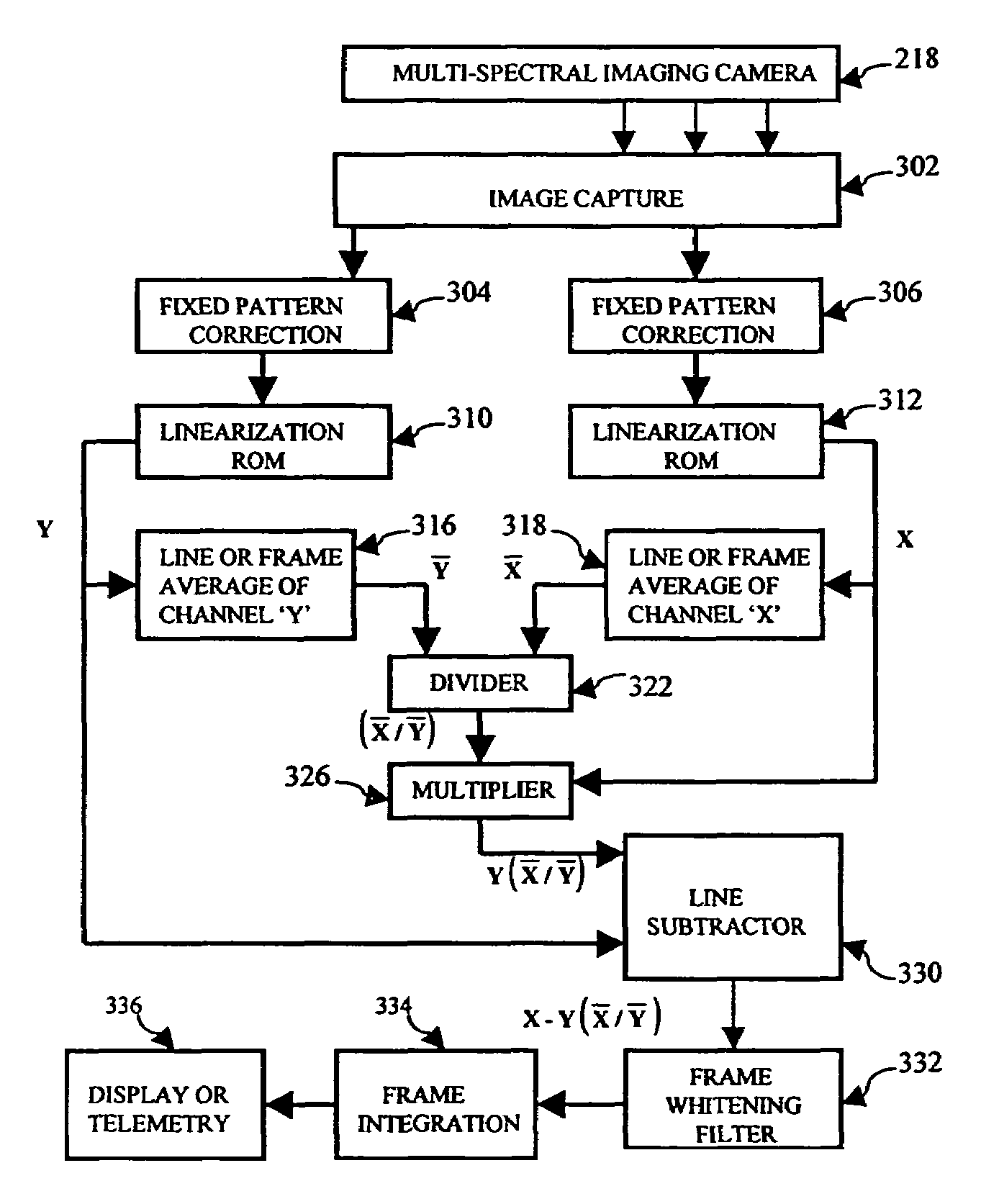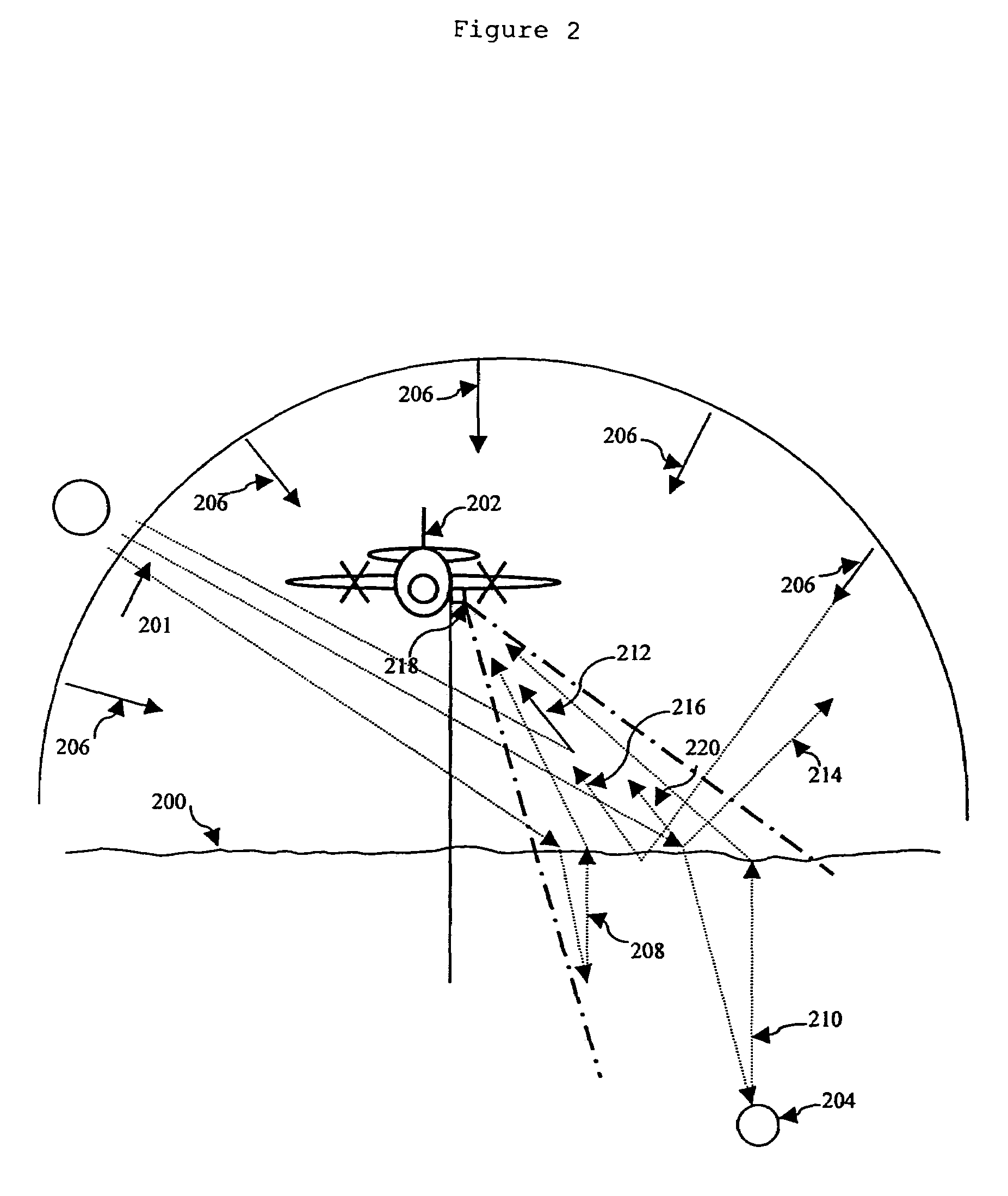Multispectral imaging system and methods of use
a multi-spectral imaging and imaging system technology, applied in the field of electronic imaging, can solve the problems of spatial misregistration, loss of processing gain, and reduced ability to detect low contrast targets in the high background imagery of the ocean surfa
- Summary
- Abstract
- Description
- Claims
- Application Information
AI Technical Summary
Benefits of technology
Problems solved by technology
Method used
Image
Examples
Embodiment Construction
[0019]The multispectral littoral surveillance system (MLSS) is a system for the detection of low contrast objects on or below the surface of the ocean through the elimination of most of the surface reflected light clutter components from multispectral images. The images are processed by taking the weighted difference of two or more spectral components and preferably applying a demeaning or whitening filter to the result. The images can then be frame averaged where the appropriate corrections for motion, magnification, rotation, and translation have been applied. The resultant imagery can then be displayed to an operator or transmitted to a remote location.
[0020]The multispectral ocean surveillance system uses a camera 218 with a sensor that eliminates the loss of processing gain in the detection of low contrast ocean objects. The new sensor (FIG. 4) is an array of three vertically stacked photodiodes (406, 408, and 410) per pixel that produces a Red, Green and Blue (RGB) output sepa...
PUM
 Login to View More
Login to View More Abstract
Description
Claims
Application Information
 Login to View More
Login to View More - R&D
- Intellectual Property
- Life Sciences
- Materials
- Tech Scout
- Unparalleled Data Quality
- Higher Quality Content
- 60% Fewer Hallucinations
Browse by: Latest US Patents, China's latest patents, Technical Efficacy Thesaurus, Application Domain, Technology Topic, Popular Technical Reports.
© 2025 PatSnap. All rights reserved.Legal|Privacy policy|Modern Slavery Act Transparency Statement|Sitemap|About US| Contact US: help@patsnap.com



